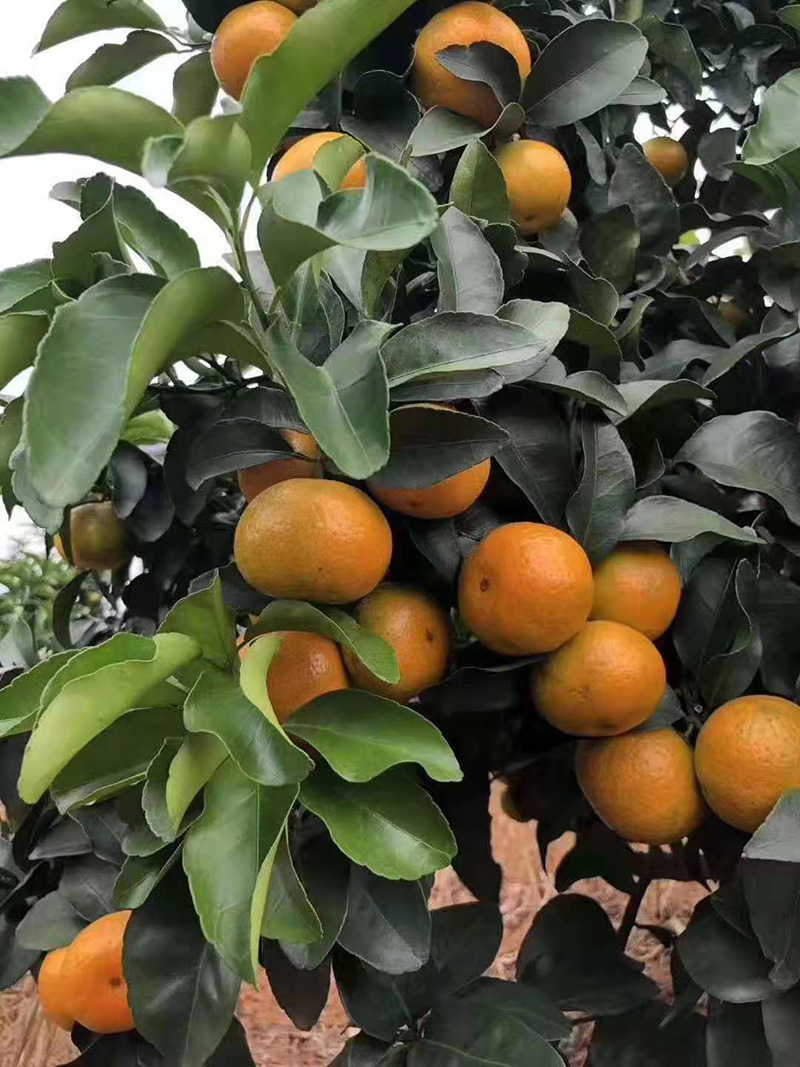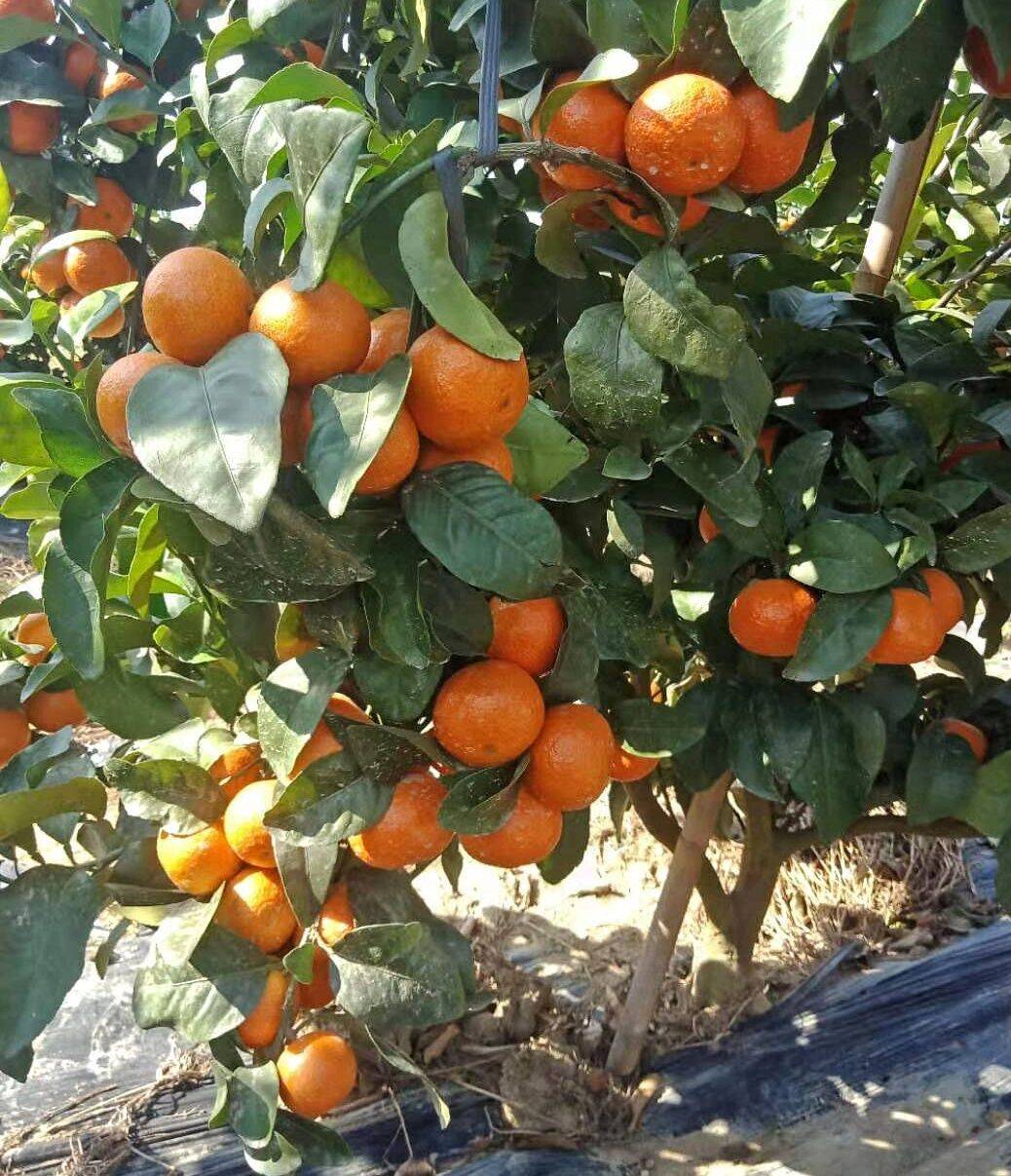Golden Autumn Sugar Orange, with Ehime 30 as the female parent and Shatang Orange as the male parent, is a carefully selected excellent individual plant from numerous hybrid offspring populations with stable horticultural traits.
Jinqiu Sugar Orange is also the first high-quality mixed citrus variety in China with independent intellectual property rights in this century. Golden Autumn Sugar Orange has a circular shape, small fruit, and an orange red color. Rich in vitamin C, high in nutritional value, high in sugar and low in acidity, smooth and delicate skin that is easy to peel off, seedless fruit, tender flesh that melts in the mouth.
Variety characteristics: Early maturity
The listing period of sand sugar oranges is about 45 days earlier than that of ordinary ones. They start coloring in late September in high humidity and low light areas (such as Gannan, Jiangxi, with an annual average relative humidity of about 80% and an annual sunshine of about 1000 hours), turn completely orange in mid October, and turn red in early November. The fruit can be harvested in batches from mid to late October and can be harvested until late November, during which the sugar content continues to rise without sugar loss. The experimental results in low altitude and low latitude areas such as Guangdong and Guangxi show that the earliest coloring period is from late September to early October, and it can mature and be launched during the National Day holiday. About 2 months earlier than the local regular satrap oranges. In late August 2016, in Pingnan, Guangxi, the golden autumn sugar oranges had already started coloring.
Non nuclear high-yield
When cultivated alone or mixed with seedless varieties, it shows seedless behavior; When mixed with multiple seed varieties, there are occasional small amounts of seeds. According to the trial planting performance in Jiangxi, Hunan, Guangxi, Yunnan and other places in recent years, this variety has a high natural fruit setting rate, extremely high yield, with a crown diameter of about 2.5 meters and a tree height of 40-60 pounds per plant in the third year of planting; Fine cultivation of seedlings, with a yield of 10-20 kilograms per plant in the third year; Based on 60 plants per acre, the yield during the peak production period can reach 4-6 tons per acre.
High sugar and low acid
In low light areas such as Jiangxi and Hunan, the soluble solids (TSS) content reached around 12.0% in late October, with a total acid content of around 0.4% and a solid acid ratio of over 25, significantly higher than other major citrus varieties on the market during the same period. On November 10th, the TSS in citrus advantageous areas such as Sichuan and Guilin in Guangxi can reach 17%. During the coloring and tree hanging period, if the weather is sunny, the TSS will increase by about 1 degree every 10 days, and will not float, lose sugar, or dry up until late December.
Tender slag
Easy to peel, with extremely tender flesh that melts in the mouth, it is one of the representative citrus varieties with tender flesh and residue to date.
Beautiful appearance
The fruit has a smooth and bright red surface, a smooth and delicate skin, and a thick and shiny wax layer.
Strong adaptability
Ordinary sugar oranges are not suitable for cultivation in areas with an average annual temperature below 20 ℃, while golden autumn sugar oranges perform well in areas with an average annual temperature of 16 ℃ -21.5 ℃.
Anti ulcer disease
In orchards with severe ulcer disease, it is rare for disease spots to appear during high grafting. In areas with severe ulcer disease, ulcer disease prevention can be avoided or only simple preventive spraying can be used, but attention should be paid to the prevention and control of common fungal diseases such as anthracnose and brown rot.
Orchard real shot














